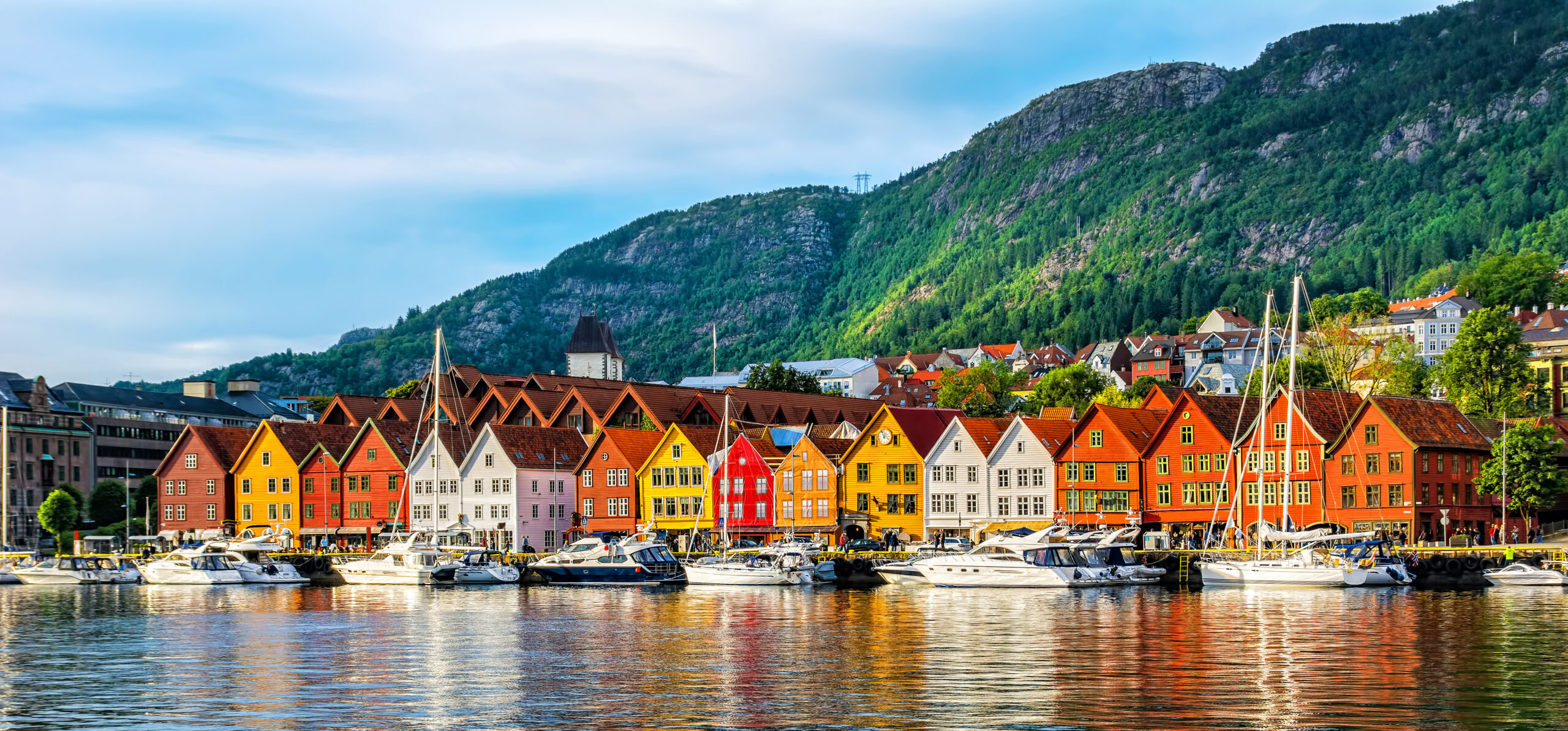A taste of Norway…

Norway offers a range of activities and sights to explore, even if you only have a weekend. Here’s a suggested itinerary for a short weekend trip:
Day 1: Oslo – Cultural Exploration
1. Morning: Visit the Royal Palace and Gardens
– Start your day by exploring the beautiful Royal Palace and its surrounding gardens in Oslo.
2. Late Morning: Explore Vigeland Park
– Head to Vigeland Park, the world’s largest sculpture park made by a single artist. It’s a fascinating collection of statues and sculptures by Gustav Vigeland.
3. Afternoon: Oslo City Center
– Spend your afternoon exploring Oslo’s city center. Visit landmarks like the Oslo Opera House, City Hall, and the National Gallery, which houses Edvard Munch’s famous painting “The Scream.”
4. Evening: Aker Brygge and Dinner
– Enjoy the evening at Aker Brygge, a waterfront district with restaurants, shops, and a lively atmosphere. Choose one of the waterfront restaurants for dinner.
Day 2: Nature and Fjord Experience
1. Morning: Train to Flåm
– Take an early morning train from Oslo to Flåm. The scenic train journey offers breathtaking views of the Norwegian countryside.
2. Late Morning/Afternoon: Explore Flåm
– Once in Flåm, explore the picturesque village, visit the Flåm Railway Museum, and take a stroll by the fjord.
3. Afternoon: Fjord Cruise
– Take a fjord cruise on the Aurlandsfjord and Nærøyfjord. The landscapes are stunning, with steep cliffs, waterfalls, and mountainous terrain.
4. Evening: Return to Oslo
– Head back to Oslo in the evening. You can either take the train or enjoy a relaxing drive, depending on your preference.
Additional Tips:
– If you’re visiting during the winter, consider taking a short trip to Holmenkollen Ski Jump and Museum in Oslo or exploring the winter sports options available.
– Keep in mind that Norway’s weather can vary, so pack accordingly. Check the local forecast to ensure you’re prepared for the conditions.
– Plan your meals to include some Norwegian cuisine. Try local dishes such as rakfisk, lutefisk, or traditional Norwegian fish soup.
Remember that Norway has an abundance of natural beauty, and even a short weekend trip can provide you with a taste of its stunning landscapes and rich cultural heritage. Adjust the itinerary based on your interests and the time of year you visit.
What currency will I need?
The official currency of Norway is the Norwegian Krone, abbreviated as NOK. The symbol for the Norwegian Krone is “kr.” The Krone is further subdivided into 100 øre, although the use of øre has become less common in daily transactions. When traveling to Norway, you will need Norwegian Krone for most purchases. It’s a good idea to have some local currency on hand, especially if you plan to explore more remote or rural areas where card acceptance may be limited.
The Norwegian Krone (NOK) comes in various denominations of coins and banknotes. Here is an overview of the common denominations:
Coins:
– Øre: There are coins in denominations of 1, 5, 10, and 20 øre. However, due to the decreasing value of the øre, cash transactions are typically rounded to the nearest whole krone.
– Krone: Coins are also available in denominations of 1, 5, 10, and 20 kroner.
Banknotes:
– Krone: Banknotes are issued in denominations of 50, 100, 200, 500, and 1,000 kroner.
When using cash, it’s common to round to the nearest whole krone due to the declining use of øre in everyday transactions.
Should I use travel cash or a card?
According to Mintel, 90% of British travellers take some travel cash with them. It’s perfect for tips, taxis, street-side vendors and locations which do not have card machines (or where they are not working). It’s easy to budget with, and share with other members of your party. It’s also not prone to technical faults, does not require internet access, and you won’t be charged to use it.
Having a debit card is also a great idea as backup – just make sure you know what fees the card issuer charges to make payments in the foreign currency (better still, find one that makes no charges at all). Bigger purchases should be made on a travel-friendly UK-issued credit card to get that additional Section 75 protection (see https://www.moneyhelper.org.uk/en/everyday-money/credit-and-purchases/how-youre-protected-when-you-pay-by-card). Make sure when paying by card that you ALWAYS pay in the foreign currency – do not let the card processor do the conversion to GBP as you will always get a worse rate. That applies even if the foreign currency is already loaded onto a prepaid multi-currency card – the card issuer will decide whether to settle from your foreign currency wallet or not.
Where can I buy currency?
You will typically get a better deal buying your travel cash here in the UK before you travel. Look for the highest possible foreign currency exchange rate to indicate the best deal. For example, a rate of NOK 13.4121 is better than NOK 12.8949 when buying Norwegian Krone(NOK). Airports tend to offer the worst rates – especially if you have not pre-ordered – and you may find a bureau de change on your High Street, in a supermarket or department store, in many travel agents, and at major transport hubs.
You can also buy Norwegian Krone from Travel Money Club for next business day despatch to home via fully insured Royal Mail Special Delivery Guaranteed by 1pm. Unlike the competition, we don’t hide fees and charges in our exchange rates – you just pay a fair and transparent handling fee based on how much you are exchanging. Get an instant quote now at https://yourtmc.link/quote-nok.


